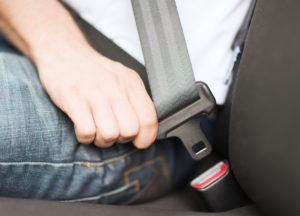4 Common Injuries Caused by Seatbelts
 You may be familiar with the sound of your car “dinging” at you when you don’t have your seatbelt on, as it is now a common safety feature. You may be so used to putting your seatbelt on immediately that you don’t think about this habit now. Seatbelts are there to protect you from serious injuries during an accident, especially ones that can occur when you are ejected from a vehicle. Unfortunately, wearing your seatbelt doesn’t protect you from every possible injury, and in some cases, they can even cause injuries on their own. Accident doctors are very familiar with these seatbelt-related injuries, and the below covers some of the most common.
You may be familiar with the sound of your car “dinging” at you when you don’t have your seatbelt on, as it is now a common safety feature. You may be so used to putting your seatbelt on immediately that you don’t think about this habit now. Seatbelts are there to protect you from serious injuries during an accident, especially ones that can occur when you are ejected from a vehicle. Unfortunately, wearing your seatbelt doesn’t protect you from every possible injury, and in some cases, they can even cause injuries on their own. Accident doctors are very familiar with these seatbelt-related injuries, and the below covers some of the most common.
Identifying a Seatbelt Injury
Like many injuries after a car accident, symptoms related to seatbelt injuries may not be apparent right away, as adrenaline and shock can hide the pain and prevent you from noticing even serious problems. It may take hours or days before your body begins to experience the full extent of these injuries. Some things, like cuts or bruises, will be obvious, while others can take a while to surface.
It is important to visit a car accident clinic as soon as possible after an accident as they will be able to identify injuries caused by a seatbelt, especially those that could be life-threatening.
Top 4 Injuries Caused By Seatbelts
1.Cuts and Bruises
Some of the most common effects of a seatbelt injury are cuts and bruises on the abdomen or shoulder and neck. These are usually caused by the force of the accident placing your body against the seatbelt, causing strain. This is important as it keeps the body from moving too violently or being thrown out of the vehicle, but when the force is too hard, it can leave cuts and bruises on your body. Many of these are superficial injuries, though they can indicate that the force was strong enough to cause other issues.
2.Torn Muscles and Dislocated Joints
A seatbelt is designed to hold your body in place, preventing serious injury. On impact, the seatbelt will usually lock up to prevent movement. Because the seatbelt is placed across your shoulder, that is one area that can be easily damaged during this process. Muscles and tendons in the shoulder can be torn or damaged due to the pressure, and in some cases, the combination of the seatbelt and the airbag can even cause your shoulder or elbow to become dislocated.
3.Broken and Fractured Bones
While these injuries are less common, there are broken/fractured bones and dislocations that can occur from auto accidents. As the body is restrained by the seatbelt, the amount of pressure on your chest and ribs can be enough to cause breaks in the bones. When a seatbelt is properly used, it goes across the chest to hold your torso still, but this commonly leads to bruised and broken ribs. The sternum, or the bone in the middle of your chest, can also be broken.
4.Organ Damage and Internal Bleeding
Also known as “Seatbelt Syndrome,” one serious injury that seatbelts can cause is damage to the internal organs. A broken bone may penetrate an organ, or the pressure of the seatbelt can be enough to bruise them. Any injury that may cause internal bleeding or damage is serious and could even be life-threatening, so this is likely the first thing an accident doctor will try and rule out before beginning treatment.
Using Seatbelts Properly
Despite the potential for these injuries, seatbelts are an important safety measure and should always be used. Understanding how and why seatbelts work can help you use them appropriately and avoid injury.
Most accidents happen close to home. This old cliché is true- almost half of all accidents occur right near your home, rather than long-distance trips. Seatbelts should be engaged before you move the car and worn even to drive down the block.
Airbags do not replace seatbelts. Most cars are equipped with airbags, but they do not act as a substitute for seatbelts. In fact, both measures are designed to be used together to provide more safety.
Both straps are important. Everybody is different, and the straps of a seatbelt may not always be the most comfortable. However, both pieces are important, and tucking a strap under your arm makes the seatbelt less safe.
